NRAO Newsletter
Volume Vol#, Issue Iss#
Day# Month# Year#
NRAO Newsletter
Volume Vol#, Issue Iss# • Day# Month# Year#

Upcoming Events

Special Session: Radio Astronomy in New Mexico
Monday, June 5, 2023 | 2:00pm to 3:30pm - Meeting Room 230 | 5:30pm to 6:30pm MDT - Exhibit Hall 3 | Albuquerque, NM

Splinter Session: An Explorer's Guide to the VLA Sky Survey
Tuesday, June 6, 2023 | 9:00am to 3:00pm MDT | Meeting rooms 15/16/32 | Albuquerque, NM

Splinter Session: The Next-Generation VLA: Update and Community Forum
Tuesday, June 6, 2023 | 2:00pm to 3:30pm MDT | Meeting Room 230 | Albuquerque, NM

NRAO Town Hall
Tuesday, June 6, 2023| 6:30pm to 8:30pm MDT | Ballroom A | Albuquerque, NM

2023 Gordon Research Conference on Origins of Solar Systems: Chemical and Dynamical Constraints on Planet Formation
June 11 - 16, 2023 | Mount Holyoke College, MA

19th Synthesis Imaging Workshop
June 13 - 21, 2023 | Charlottesville, VA

New Era of AGN Science with Vera C. Rubin LSST
July 24 - 26, 2023 | Charlottesville, VA

The Evolution of Gas in and around Galaxies
July 31 - Aug 4, 2023 | Stanley, ID

GBO Single Dish Summer School
August 6 - 11, 2023 | Green Bank, WV and Online

ALMA at 10 years: Past, Present, and Future
December 4 - 8, 2023 | Puerto Varas, Chile
NRAO/GBO Users Committee Meeting
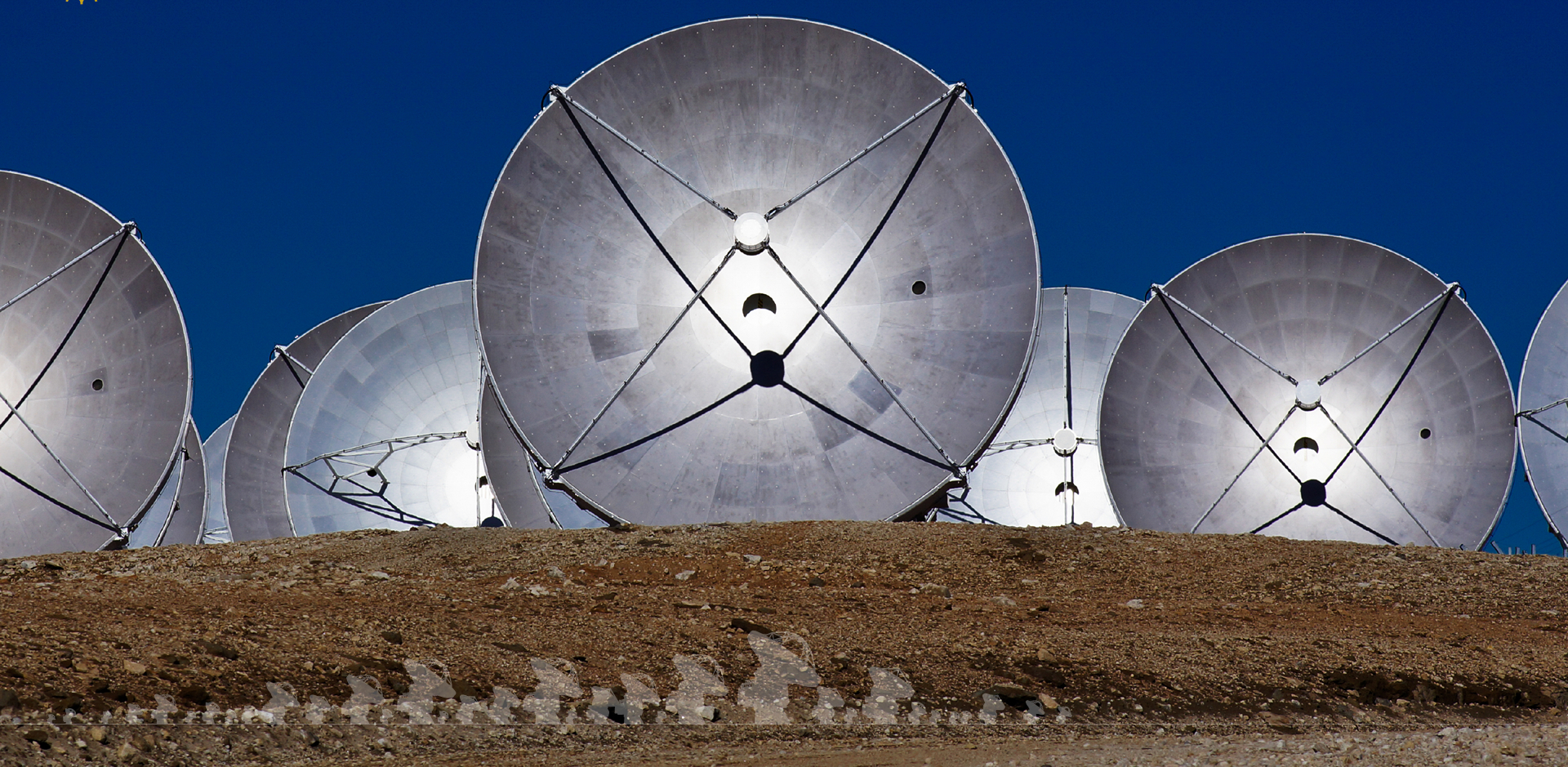
NRAO/AUI/NSF
The NRAO/GBO Users Committee meets this month (May 23-25, 2023). This committee meets annually to advise the NRAO and GBO Directors and the Observatory staff on all aspects of Observatory activities that affect the users of the telescopes.
The committee has this web form to receive comments and suggestions from the astronomical community regarding any aspect of the Observatory's scientific operations they would be interested in the committee discussing. Alternatively, please also feel free to email anyone on the committee.
ngVLA Project News
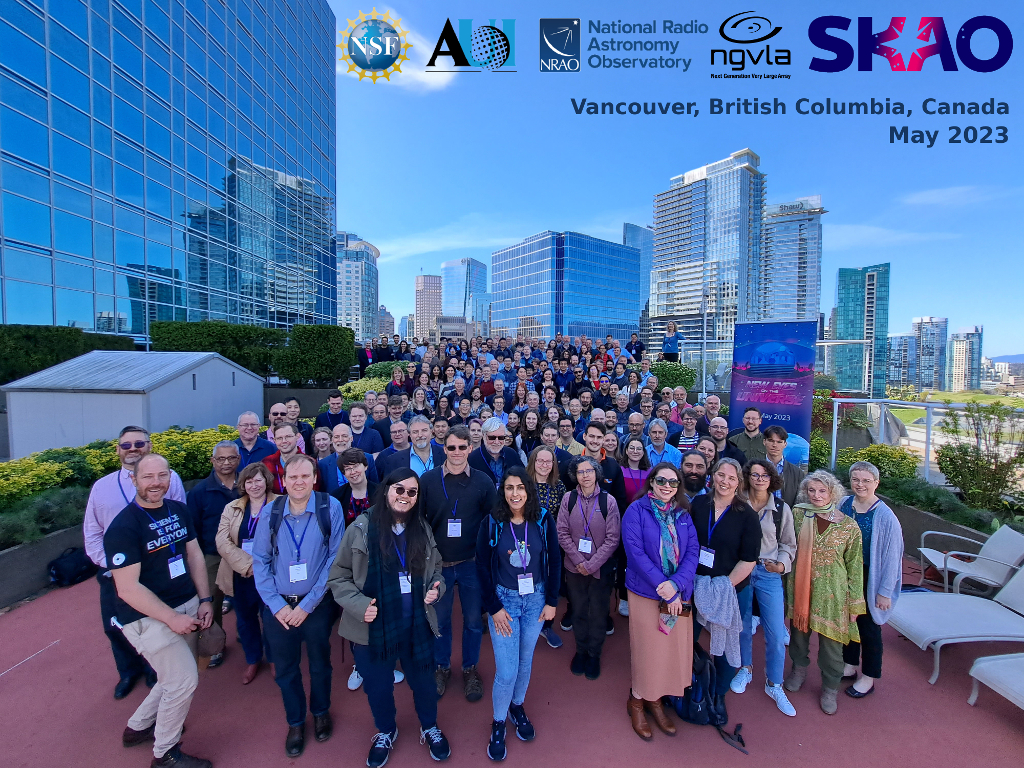
Brian Kent
Astronomers from around the world gather in Vancouver, British Columbia, Canada to discuss the exciting new science possibilities afforded by ngVLA and SKA.
[click to enlarge]
New Eyes on the Universe: SKA and ngVLA was held May 1-5, 2023 in vibrant Vancouver, British Columbia, Canada. This conference brought together 310+ attendees from around the world. Their 60 talks and 120 posters laid out the cutting-edge science opportunities enabled by the three decades of frequency spanned by the Square Kilometer Array (SKA) and the next-generation Very Large Array (ngVLA).
Thanks to our organizing committees, venue hosts, and participants for a successful conference that will be a launching point for new science, technical, and operational developments. The conference website offers access to all abstracts, talk videos, and poster media.
ngVLA-SKA Conference Photos
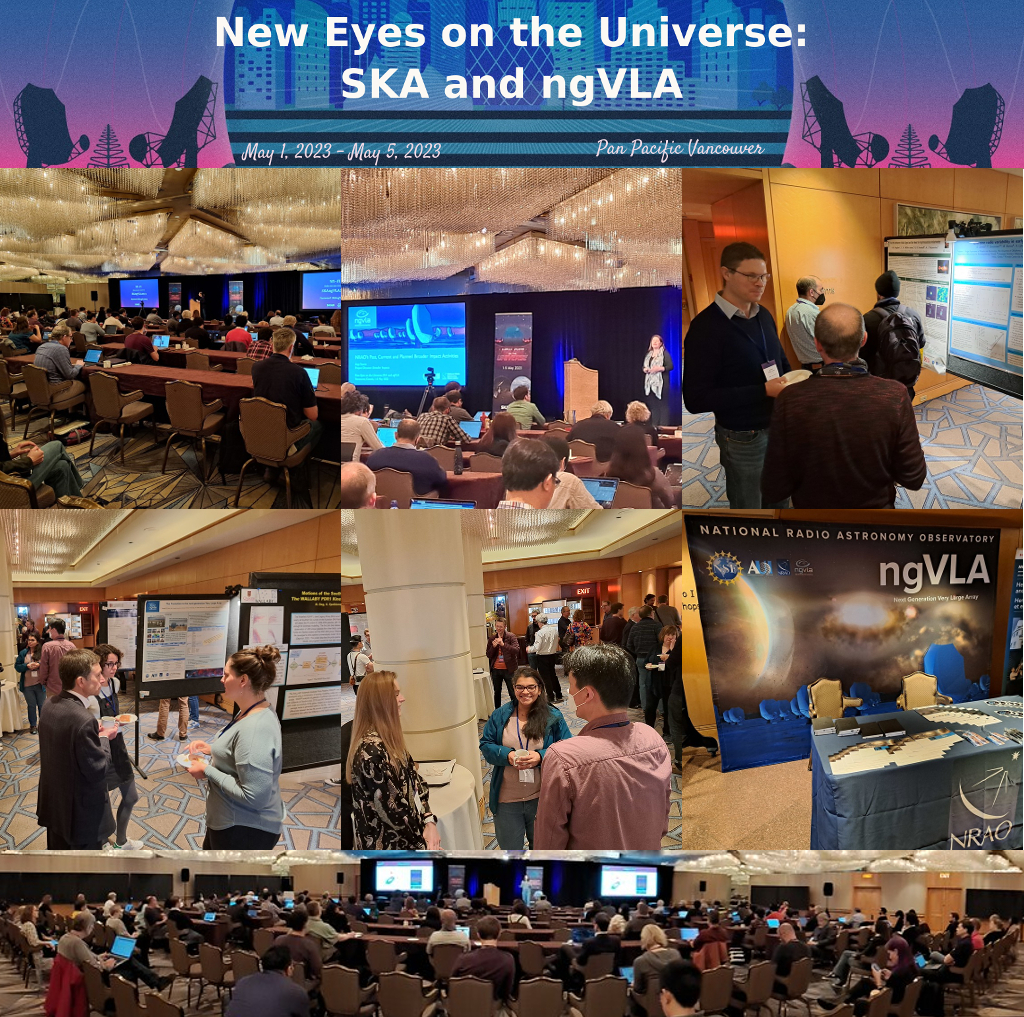
Brian Kent
[click to enlarge]
Observing Nearby Massive Protostars with the ngVLA
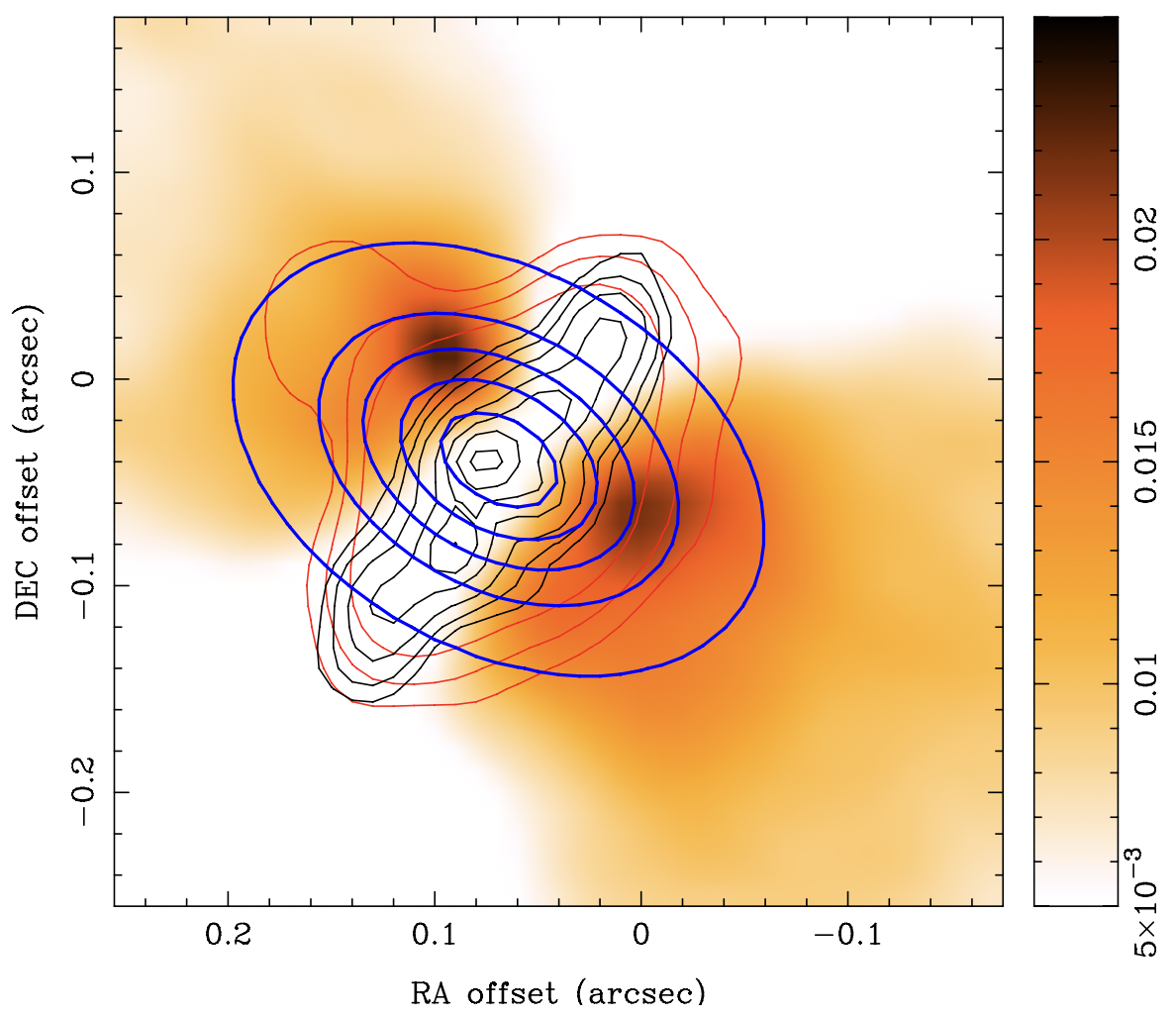
Colormap shows the molecular outflow at 217 GHz from the SrcI disk. Continuum contours trace the disk (black, 99 GHz), the disk and features along its minor axis (red, 43 GHz), and a deconvolved Gaussian fit to a minor-axis component (blue, 6 GHz). Credit: Wright et al. 2023
[click to enlarge]
Jets and outflows are closely associated with accretion in the formation of stars. They transfer linear momentum and kinetic energy to outer envelopes and influence future star-formation in surrounding regions. They also extract excess angular momentum, enabling mass accretion through disks.
Jets can be traced via free-free radio continuum emission. Such emission is relatively weak and compact, and high angular resolution at centimeter wavelengths is required for imaging because of high opacity at millimeter and infrared wavelengths (e.g., Anglada et al. 2018).
SrcI is a 15-solar-mass protostar in the nearby Orion nebula (Ginsburg et al. 2018). We used the VLA and ALMA to image its continuum emission (Wright et al. 2023, and references therein). At millimeter wavelengths the images reveal a circumstellar disk with a diameter of 100 AU, but at centimeter wavelengths the emission is elongated along the minor axis of the disk and aligned with the millimeter molecular outflow (see figure).
So far, the properties of the centimeter component are most consistent with free-free emission from a jet. Such material might be expected to echo accretion-inflow events, perhaps related to SrcI harboring a deeply embedded binary-star system (e.g., Goddi et al. 2011). This raises the intriguing possibility of using time variability at centimeter wavelengths to identify accretion events and study their causes.
Future high resolution and well calibrated ngVLA observations will test the suggested free-free nature of the centimeter component and monitor its evolution over time.
Since 2015 the acronym ngVLA has appeared in 950+ publications indexed in the SAO/NASA Astrophysics Data System. This article continues a regular feature intended to showcase some of those publications. We are especially interested in showcasing work done by early-career researchers. The collection of showcase articles can be viewed online. Anyone wishing to volunteer to author a feature should contact Joan Wrobel.
ALMA Program News
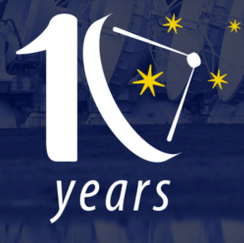
ALMA Status
ALMA is observing in May in its current C-6 configuration and plans to expand to C-7 (baselines 64-3600m) by month's end. The Cycle 10 Call for Proposals closed on May 10 for observations from October 2023 to September 2024. Results of the proposal review are expected to be delivered to proposers in August 2023.
Cycle 10 Call for Proposals Produces Record Time Request
Preliminary results after closing the Cycle 10 Call for Proposals (CfP) shows continued strong demand for ALMA time. The community submitted 1680 proposals. Although this is a slight decrease from the most recent cycles, the amount of time requested on the 12-m array increased to over 29,000 hours, which is the most time ever requested in a single cycle. This implies an overall oversubscription rate of 6.9 on the 12-meter array. The amount of time requested on the 7-m and Total Power arrays also remains very robust, with approximately 15,000 hours requested on each array.
Conference ALMA at 10 years: Past, Present, and Future Dec 4-8, 2023
Registration and abstract submission is open for the conference ALMA at 10 years: Past, Present, and Future to be held in Puerto Varas, Chile, on December 4-8, 2023. The conference covers ALMA's first decade of science operations while looking forward to the evolution of ALMA's capabilities in its second decade.
Student Funding Opportunity for ALMA Archival Research
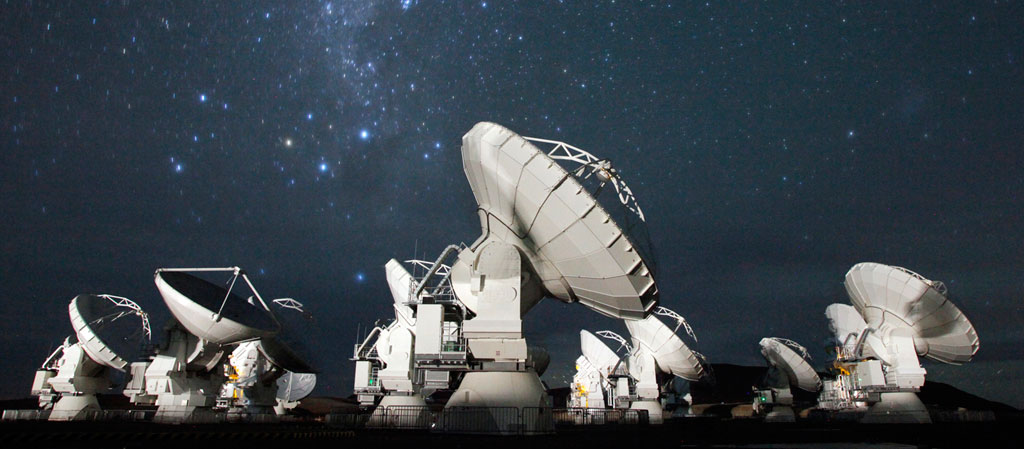
NRAO/AUI/NSF
The North American ALMA Science Center is pleased to announce a funding opportunity to support U.S. students working on data obtained from the ALMA archive. This opportunity will follow the terms and conditions of the NRAO Student Observing Support (SOS) program. Eligible expenses include a student stipend, computing hardware, and student travel to present ALMA results at a domestic conference. Awards are subject to the SOS cap of $40,000 per investigator per year, combined with any active VLA/VLBA and ALMA SOS awards. While preference will be given to programs that draw from the rich archive of public ALMA data, PIs may also apply for funding to continue research on their own ALMA programs.
The NRAO SOS Program provides student funding on a competitive basis. Applications consist of (1) a scientific justification to describe the context, aims, and anticipated scientific results of the investigation, written using the ALMA dual-anonymous guidelines, (2) a statement of the student's role in the research with a plan for publication, and (3) a statement of the PI's current and pending funding and demonstrated need.
For more information, and to apply, visit the student programs webpage.
The application deadline is June 5, 2023 and results will be announced in August 2023.
Questions about this SOS opportunity may be directed to Jim Braatz.
Post-Baccalaureate Research Fellowships
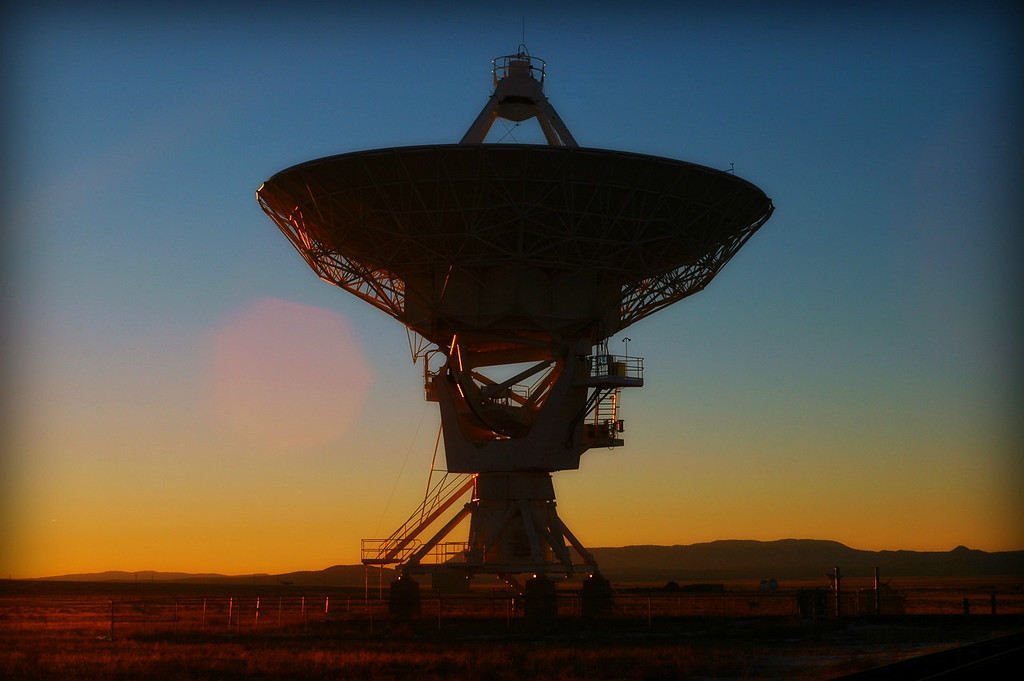
Brian Kent
NRAO and GBO are pleased to announce a new Post-Baccalaureate Fellowship Program. The program provides recent graduates an opportunity to strengthen their applications to graduate school by gaining research experience in radio astronomy or a related field. Appointments are available at the NRAO sites in Socorro, NM and Charlottesville, VA, as well as the GBO site in Green Bank, WV. Students will work on a radio astronomy research project under the mentorship of one or more NRAO or GBO scientific staff members.
To be eligible, students must be U.S. citizens or permanent residents and must be recent graduates or soon be graduating with their undergraduate or MA degree, and should have the intention of applying to Ph.D. programs in astronomy or a related field. Appointments may range from 9 to 12 months. Students will receive a stipend and travel support to relocate to the NRAO or GBO site and travel support to present their research at a scientific conference.
Applications for the Post-Bacc program consist of (1) a statement describing research interests and future goals (less than 1000 words), (2) a resume, (3) an academic transcript, and (4) two or three letters of recommendation from people who can address the student's potential for a career in research. Application materials can be emailed directly to Jim Braatz at the address given below.
Applications are due June 16, 2023 for appointments beginning in Fall 2023. More information and application instructions are available.
Questions about the Post-Bacc Fellowship may be directed to Jim Braatz.
19th Synthesis Imaging Workshop, Charlottesville
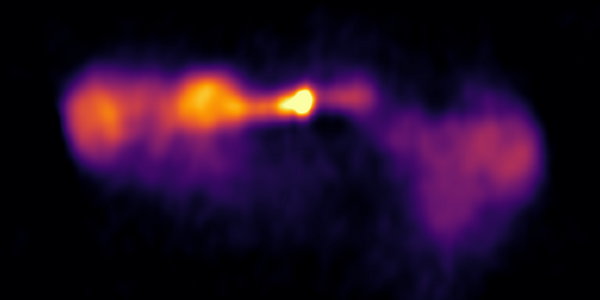
Image produced by the VLA Sky Survey (VLASS)
The 19th NRAO Synthesis Imaging Workshop will be held June 13-21, 2023 in Charlottesville, Virginia. The workshop will consist of lectures on aperture synthesis theory and techniques at a level appropriate for graduate students in astrophysics. The program also includes discussion groups, and tutorials demonstrating data collection, calibration, and imaging of various types of observations, including new data from the Very Large Array (VLA), Very Long Baseline Array (VLBA) and the Atacama Large Millimeter/submillimeter Array (ALMA).
In person registration has closed, but virtual participation is now available!
Virtual participants will be able to remotely attend the lecture and Q and A sessions. Due to logistical constraints, tutorial session will remain available only to in person participants.
This is also an excellent opportunity to engage with domain experts in many scientific areas that have used radio facilities. Special presentations on multi-messenger and time domain projects will also be given as well as brown bag discussions on equity, diversity, and inclusion.
If you have any questions, comments, or concerns, including possible financial support for the meeting and virtual options, please contact the meeting organizers.
VLBA C-band Gain Corrections
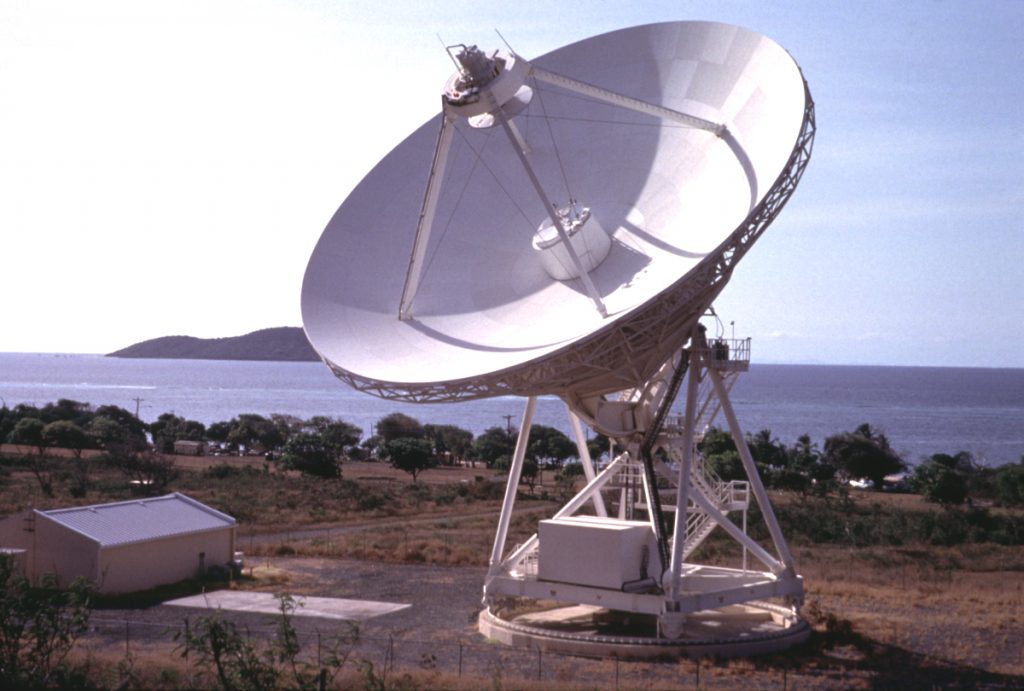
NRAO/AUI/NSF
NRAO recently discovered that the gain values for 6-8 GHz observations were not being attached to the FITS-IDI files. Additionally, focus problems at the North Liberty and Pie Town stations resulted in reduced sensitivity at those stations for 6-8 GHz observations. The combination of these two effects leads to flux densities that are incorrect by a factor of up to 50%. Observations from 2020-02-11 onward are affected. The focus issue was fixed 2023-04-05. VLBA staff are working to correct the gain values in the FITS-IDI files for new observations. Antab files with the correct gain values are available for all users with observations between 6 GHz and 8 GHz starting 2020-02-11. More details and instructions on how to utilize the antab files are available on the VLBA 7GHz Flux Density Scale webpage. Users are encouraged to contact VLBA staff via the NRAO helpdesk if they have any questions or concerns.
SCHED 11.8 released
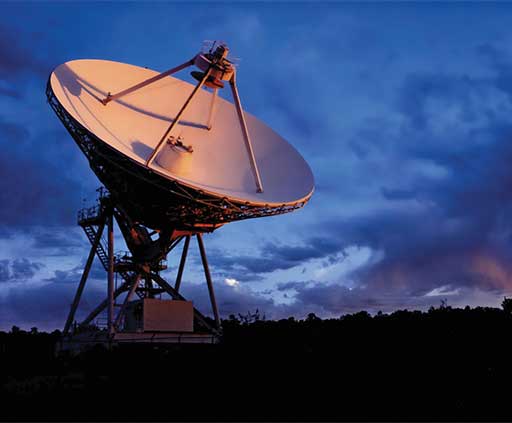
NRAO/AUI/NSF
SCHED 11.8 has been released and is available on the NRAO ftp at ftp.aoc.nrao.edu/pub/sched/. This is primarily a bugfix release for planets in autopeak, also allowing for custom bandwidth selection, and changes the default VLBA recorder to Mark6. Please note while new source catalogs are included (including new sources), existing sources have not had positions updated. Therefore multi-epoch observations should not be affected by the change in version. See the SCHED manual for further information on changes and examples.
Radio Astronomy - An Unpublished 1970 Manuscript
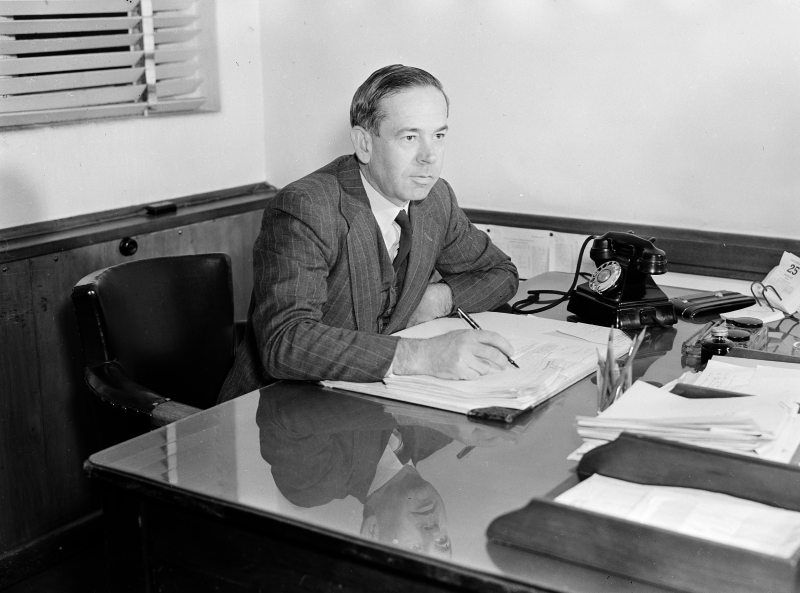
[click to enlarge]
CSIRO Radio Astronomy Image Archive
Arthur Higgs, Assistant to the Director of the CSIRO Division of Radiophysics
In August 2015, while conducting research in the National Archives of Australia, Miller Goss discovered the almost complete manuscript of an unpublished book by Arthur Higgs (Assistant to the Director of the CSIRO Division of Radiophysics). In June 2012 CSIRO's Antony Schinckel had told Goss that he and his sister, Sarah, had been childhood friends of Higgs and his wife Jean.
The Higgs manuscript, written 1968-1970 at the request of the publisher (Nelson Australia), is a popular level survey of radio astronomy at the end of the decade after the opening of the Parkes radio telescope on 31 October 1961. In his prospective book, Higgs wrote about many of the ground-breaking discoveries achieved by Parkes in those first years of operation, along with a detailed description of the impressive post-WWII growth of radio astronomy in Australia.
With permission of the National Archives of Australia, we present the unpublished chapters of the book, accompanied by supplementary material about Higgs, the correspondence between Higgs and the prospective publisher, photographs gathered by Higgs for his book, and newly written commentary on issues described by Higgs.
Higgs never completed and Nelson never published the book, but Higgs summarized his initial intent in a letter to the publisher on October 16, 1968:
My overall objective, however, would be to produce an interesting but authoritative account of Radio Astronomy at a semi-popular level which would be thoroughly up-to-date and different from other texts on this subject, in that it would draw largely on Australian material for illustrative purposes and record the significant contributions which Australia has made toward the development of this new and exciting field. This has not yet been adequately done.
Covering the origins of cosmic radio waves, instruments and methods, the nature and distribution of radio sources, the Sun, Solar System sources, exploding stars, hydrogen-line emission and galactic structure, extragalactic HI, interstellar molecules, cosmic magnetic fields, quasars, pulsars, and radar astronomy, the Higgs book is an interesting survey of the state of radio astronomy, both in Australia and internationally, at the end of the 1960s.
Our Changing Planet Summit
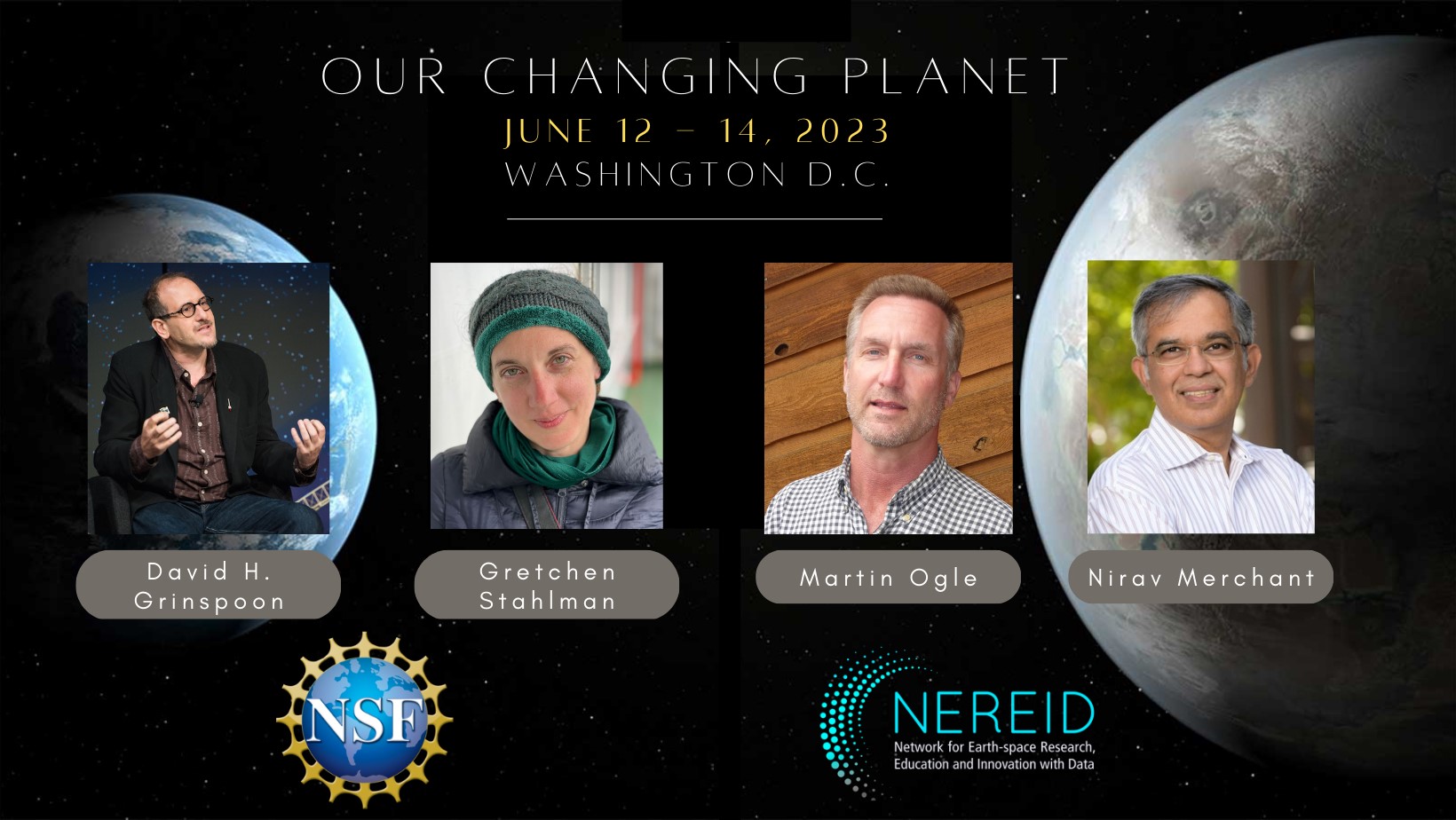
Calling all researchers, educators, and policy makers - do you want to help discover new and innovative approaches to finding life on other planets? Do you want to contribute to the creation of better models to accurately predict the impact of climate change and how the Earth will evolve over time?
If these are the kinds of questions that interest you, the Network for Earth-space Research, Education, and Innovation with Data (NEREID) and Associated Universities Inc. (AUI), invite you to the Our Changing Planet Summit. The event will take place in the Washington D.C. area June 12 -14, 2023.
The Summit will bring together researchers, engineers, educators, policy makers, and others across astronomy, Earth-space sciences, data sciences, life sciences, art and the humanities, and social sciences to explore how data from other planets beyond Earth can help us better understand the planet we call home and how a deeper understanding of planet Earth can advance our knowledge of planets and the search for life in our solar system and elsewhere in the universe. Through this convergent science lens, participants will also explore specific and innovative solutions to big questions and challenges (climate change, water/food shortages, potential space-related catastrophes, etc.), and new connections for authentic collaborations outside of and on the fringes of their discipline.
Furthermore, the Our Changing Planet Summit will serve as a space for participants to forge unanticipated new connections and collaborations while envisioning challenges and projects that can only be tackled by working outside of conventional disciplinary structures. One of the primary goals is to facilitate the evolution of new convergent science projects that will continue to be pursued long after the Summit ends.
Come join us for what is sure to be a high-energy event where new and innovative ideas emerge that advance science and education across disciplines for the betterment of all of society and the planet we call home. Space is limited - once the program is full, additional participants will be placed on a waiting list. For more information, and to register, please visit our website.
Recent Media Releases
|
NAC Students Receive Prestigious Medals |
|
|
NRAO Announces Funding Opportunities for US Students |
|
|
Rare Nighttime Photography of the VLA |
|
|
Contact the NRAO press office to share your new and exciting science results. |
From the Archives
Ellen Bouton

[click to enlarge]
About this month's photo: Ninety years ago, on May 5, 1933, The New York Times announced Karl Jansky's discovery with their report on the front page, top left column: "Radio Waves from the Centre of the Galaxy" -- a discovery which led to the founding of NRAO in 1956. In 1966 AUI established the annual Jansky Lecturership to honor the founder of radio astronomy, with John Bolton as the first Jansky Lecturer. For many years, members of the Jansky family have attended the annual lecture. In this photo, Curtis Jansky (Karl's nephew), David Jansky, (Karl's son), Greg Jansky (David's son), Ken Kellermann (NRAO's Jansky family host), and Matthew Jansky (Curtis's son), enjoy the barbecue before the 2011 Jansky Lecture given by Sandy Weinreb.
From the Archives is an ongoing series illustrating NRAO and U.S. radio astronomy history via images selected from our collections of individuals' and institutional papers. If readers have images they believe would be of interest to the Archives, please contact Ellen Bouton.

